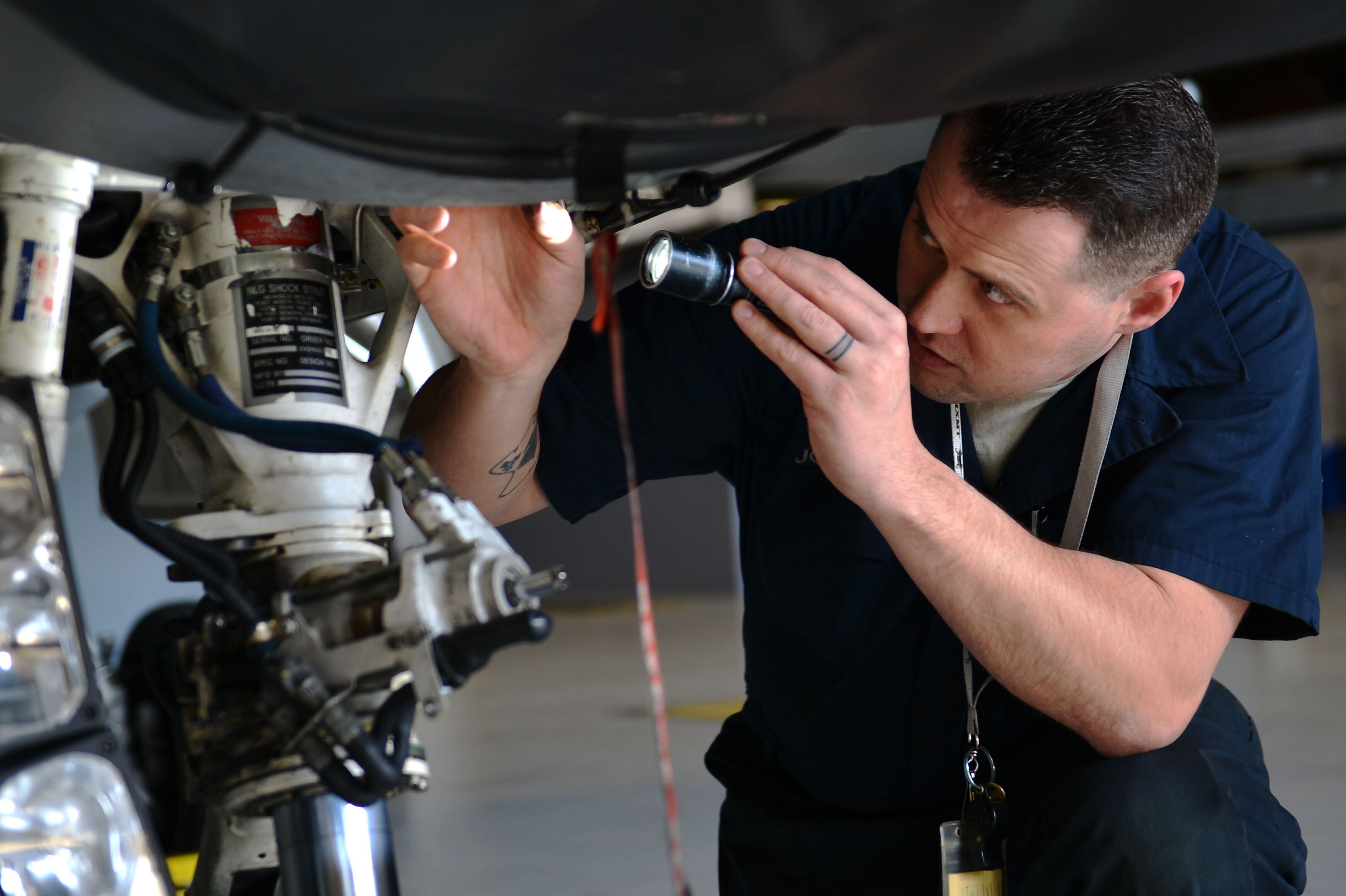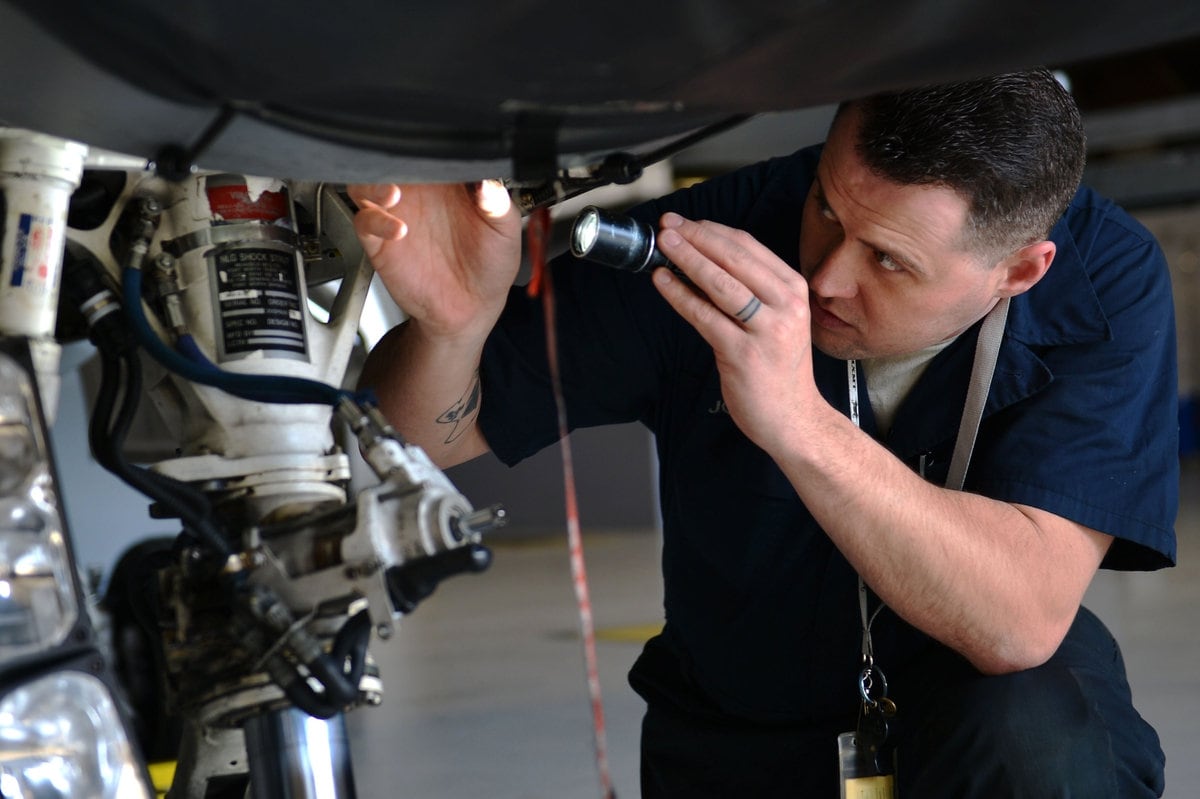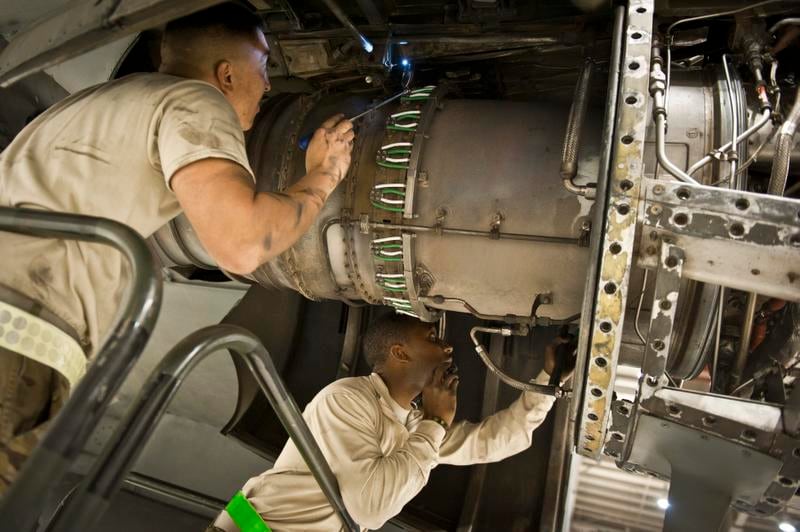The Air Force has brought on thousands of new maintainers over the last year in an effort to quickly erase a massive shortfall that it feared threatened its aircraft readiness.
But now comes the hard part.
The Air Force has to get them seasoned so they can hold their own alongside veteran maintainers when they deploy overseas — and quickly.
Part of the strategy to accelerate their learning process will involve pulling some old fighters out of the Boneyard, the service’s aircraft graveyard at Davis-Monthan Air Force Base in Arizona.
“We’ve closed that [personnel] gap, but the real challenge is ... what do you do with those new people? You got to train them,” said Col. Michael Lawrence, chief of the Air Force’s maintenance division. “We’re in the midst of pivoting from a quantity issue to a training issue.”
In the wake of the steep 2014 drawdown, the Air Force was left with a shortage of roughly 4,000 maintenance airmen. Of that shortfall, about 1,900 were the most critical and experienced 5- and 7-skill level maintainers.
The most experienced maintainers who remained often ended up working 50- or 60-hour workweeks, including weekends. This was especially true at stateside squadrons, since the Air Force tries to ensure its deployed combat squadrons are at full strength. In the face of that stress, maintainers have told Air Force Times they watched many more experienced colleagues walk out the door.
RELATED

A massive recruitment wave over the past two years — coupled with retention incentives — helped slash that shortfall to 3,400 at the end of fiscal 2016, and then to 400 by the end of fiscal 2017.
Lawrence said the Air Force accessed about 6,000 new maintainers in 2015, which is fairly typical historically. In 2016, that number increased to 8,200 accessions, and in 2017 it went up to 9,327 new maintainers.
But it typically takes five to seven years to get those new 3-skill level maintainers fully seasoned and experienced.
That means that new airmen brought on in 2016 wouldn’t be at full strength until 2021 — and the Air Force can’t wait that long.
Speeding things up

To speed up the process, Lawrence said, the Air Force in early 2018 will start pulling old F-15s and F-16s from the Davis-Monthan boneyard and preparing them to serve as trainers for new maintainers and weapons loaders.
They won’t fly and won’t be combat-viable — they’ll actually be shipped to such bases as Shaw Air Force Base in South Carolina — so, in a sense, they’ll be like the cadavers used by medical students in training.
Having those dedicated training aircraft will allow new maintainers to learn without having to wait for active flying aircraft to become available. It also will help keep active planes in the air, doing what they’re intended to do, rather than being taken offline so a maintainer can learn a new skill, Lawrence said.
“Every jet that I can relieve and put back on a flying schedule instead of being a ground instructional trainer, that has second- and third-order return on investment,” Lawrence said. “Because every jet that gets ready to go on a flying schedule, there are a series of tasks that have to be done. When you move jets from one place to another in a maintenance group complex, that drives a level of effort. When we can park a jet down there on a permanent basis, that is a training asset.”
Lawrence said the Air Force hasn’t decided how many fighters it will regenerate. He said similar A-10 trainers are already in the field, so the Air Force is concentrating on F-15s and F-16s.
Civilian help
The Air Force is also bringing on more contractors and civilian employees to handle certain non-combat maintenance duties, so new uniformed maintainers can concentrate on the tasks they’re likely to perform when they deploy, Lawrence said. For example, jets usually aren’t washed when they’re downrange, he said. The Air Force doesn’t often have access to wash facilities at foreign bases, so planes are typically washed before and after a deployment.
RELATED

But stateside, jets are usually washed every two to three months. That means four or five maintainers have to tow the jet to the wash facility a mile away, tape up ports, and remove external pods and other hardware. After it’s done, all the tape has to be taken off and the hardware replaced, and parts like landing gear have to be lubricated.
That’s at least a shift’s worth of work for those maintainers, Lawrence said.
“We don’t wash jets in the AOR right now, so why would we spend an airman’s valuable time doing that which we do not do as a combat task?” Lawrence said. “Why not repurpose that airman and have that task be performed by another entity? That’s a morale-builder, too. Everybody’s excited about that initiative. Imagine washing a jet in 30-degree weather.”
The Air Force also increased its use of selective re-enlistment bonuses. And the Air Force is bringing back former maintainers who had separated from the service — 236 in 2016 and 295 in 2017, Lawrence said. A handful of other maintainers who had retired also have returned, but they number in the single digits.
The Air Force also brought in contractors to teach its graduate training units, where maintainers learn the finer points of fixing their primary weapon system, after they’ve learned the basics, Lawrence said.
This freed up about 600 experienced maintainers who had been teaching and put them back on the line.
Stephen Losey is the air warfare reporter for Defense News. He previously covered leadership and personnel issues at Air Force Times, and the Pentagon, special operations and air warfare at Military.com. He has traveled to the Middle East to cover U.S. Air Force operations.




